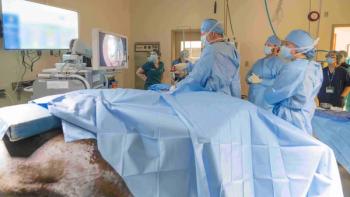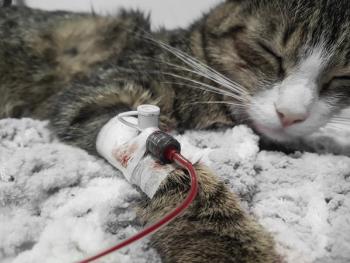
Journal Scan: Ovarian pedicle tie technique put to the test
Will this alternative ovariohysterectomy technique hold up while saving valuable time in a high-volume setting?
GETTY IMAGESWhy they did it
Since time is of the essence in veterinary clinics, these researchers evaluated the rate of hemorrhage-related complications associated with pedicle tie procedures in cats undergoing ovariohysterectomy at the Oregon Humane Society (OHS) and compared the surgical time of pedicle tie to the pedicle double ligation technique.
What they did
The study involved two phases. In phase one, more than 2,000 intact female cats were spayed with the pedicle tie technique by one of three surgeons experienced with the procedure. The cats, which were either part of a low-cost spay-neuter program or owned by the OHS and adopted shortly after surgery, were categorized as kittens (< 4 months of age) or adults (> 4 months of age). Cats in estrus or that were pregnant were not excluded from the study as they were routinely spayed in this clinic setting.
The cats were evaluated for ovarian pedicle hemorrhage intraoperatively and monitored postoperatively. Any hemorrhagic complications were corrected either at the time of surgery or via exploratory surgery if hemorrhage was suspected after recovery.
In phase two, the surgical times were recorded for more than 200 similarly categorized female intact cats undergoing ovariohysterectomy with either the pedicle tie or pedicle double ligation technique.
What they found
Of the large number of pedicle tie procedures performed in phase one, only six ovarian pedicle hemorrhagic complications were recorded. Five of these were detected intraoperatively and corrected via pedicle ligation. None of these were cats in estrus or pregnant, and the surgical times for the pedicle tie procedure were two minutes faster than with pedicle double ligation technique.
Take-home message
For practices with limited resources performing a high volume of feline ovariohysterectomies, every minute counts. The results of this study suggest that the pedicle tie procedure is associated with a low risk of ovarian pedicle hemorrhage while reducing surgical time. The benefits of a two-minute per surgery time reduction in a high-volume spay and neuter clinic are significant considering employee (surgeon and anesthetist) pay and anesthetic and surgical material (suture) cost savings over time. Furthermore, the reduced surgical time may also decrease the risk for other types of surgery-related complications such as hypothermia or infection.
Miller K, Rekers W, Ellis K, et al. Pedicle ties provide a rapid and safe method for feline ovariohysterectomy. J Feline Med Surg 2015; Epub ahead of print.
Link to abstract:
Newsletter
From exam room tips to practice management insights, get trusted veterinary news delivered straight to your inbox—subscribe to dvm360.




